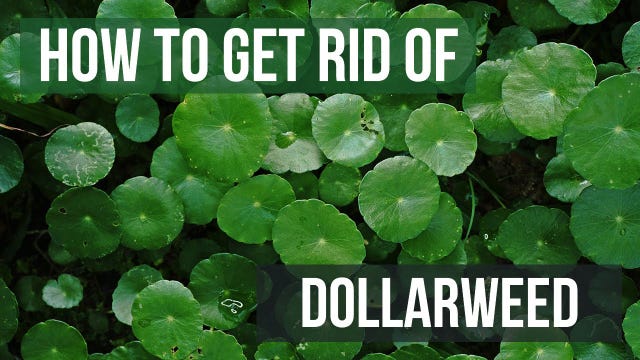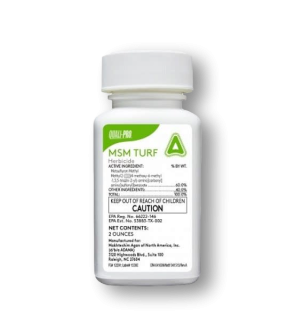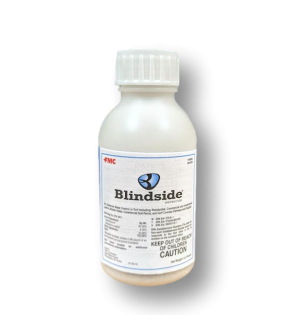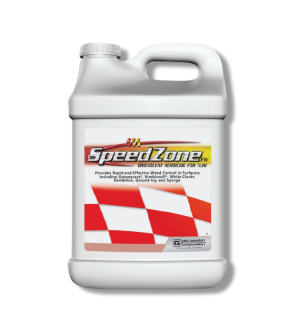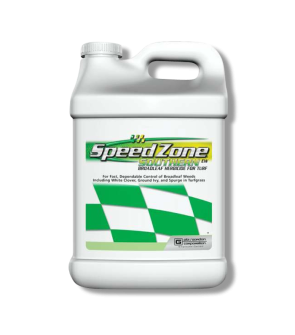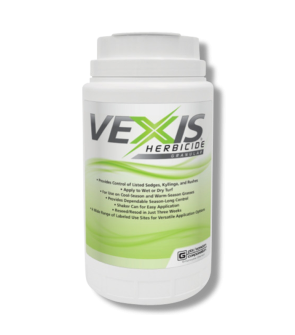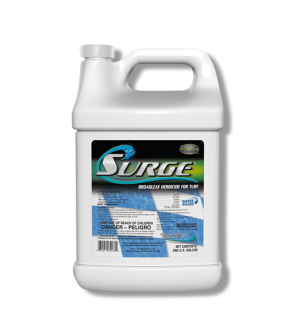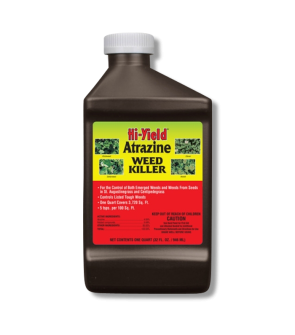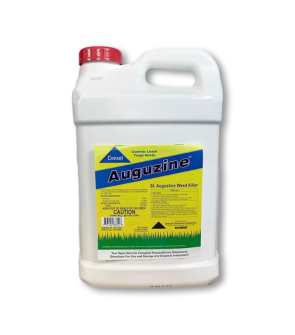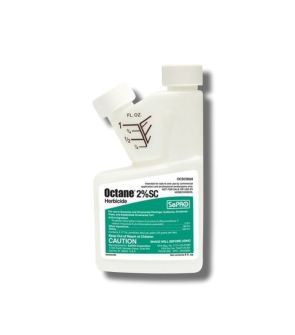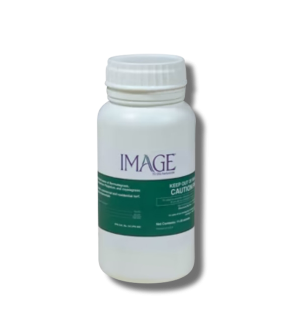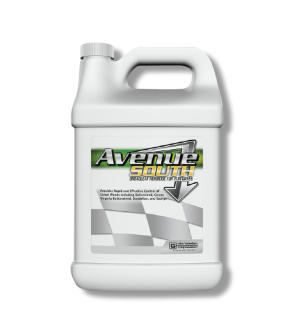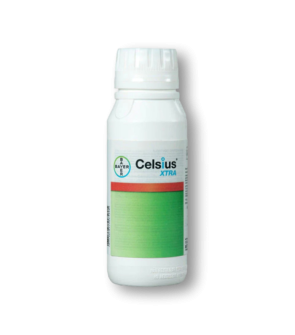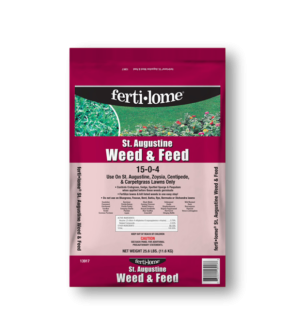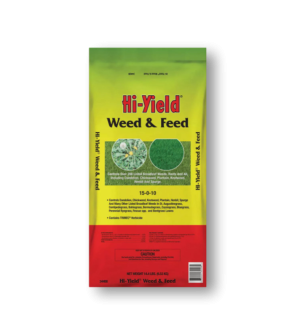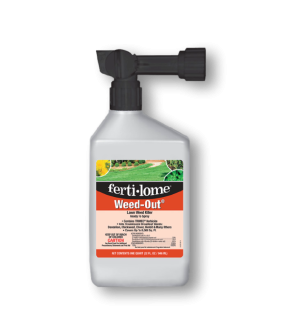Gain access to personalized product screening, the best pricing, rewards, and more!
Most Effective Products
Dollarweed Control: How to Get Rid of Dollarweed
This page is a general Dollarweed control guide. Using the products and methods suggested, you will get control of dollarweed. Follow this guide and use the recommended products, and we guarantee 100% control of dollarweed.
Living in an area with warm temperatures and access to bodies of water is the perfect environment for dollarweed. Commonly known as pennywort, dollarweed gets its name from the shape it takes. The round leaves are glossy and similar in size to a silver dollar. This weed can float and be tricky to deal with.
You're most likely dealing with dollar weed issues because your lawn has too much water. This can be caused by several things, such as soil not draining properly, too much rain, or thin turf. One factor that makes dollar weed hard to control is its spread. This weed uses both seeds and underground roots to spread, which means treatment needs to be effective to completely remove dollar weed from your lawn.
If you are dealing with a dollarweed outbreak in your yard, follow our DIY guide for professional product suggestions and expert instructions for quick and effective removal.
Identification

It is important to ensure the weed infesting your lawn is dollarweed. Misidentification can lead to using the wrong products and methods to remove it effectively, wasting your time and money.
- Dollarweed, also known as pennywort, is a perennial warm-season weed that gets its name from the silver dollar-like shape of its leaf.
- Dollarweed is dark green and resembles a tiny lily pad.
- Dollarweed grows small, and white flowers bloom in the summertime between July and August.
- Dollarweed is commonly mistaken for another weed called dichondra. You can tell the two apart by taking a look at their stems. While dichondra stems are found at the edge of their leaves, the stem from dollarweed can be spotted from the center of the leaf.
- Dollarweed is a water-loving plant and can float.
- When it is found in St. Augustine grass, it usually indicates high moisture levels in the turf.
- The creeping stems of dollarweed root into wherever their nodes contact the soil, increasing the number of weeds in a very short amount of time.
Use the description and image above to ensure that the weeds in your lawn are dollarweed. If you are not entirely sure, contact us, and we will help you with proper identification.
Inspection

After correctly identifying dollarweed, examine your turf more closely to find spots where it is most active. This will help you determine where to focus your herbicide treatment.
Where to Inspect
Search areas in your lawn with high moisture content. Sections, where the soil has too much water, will be perfect spots for dollarweed to emerge. Spots where your grass is cut too short are also popular areas for this weed.
What to Look For
Keep an eye out for a weed that looks like a small lilypad. Its leaves will be glossy and green with wavy edges. Dollarweed will most likely be grouped.
Treatment
After you have inspected your yard for dollarweed, you can proceed with treatment. Wear the proper personal protective equipment (PPE) before handling or applying any product.
To effectively get rid of dollarweed, we recommend using either MSM turf herbicide or Fahrenheit herbicide.
Msm turf herbicide is a selective herbicide that will not harm your grass. It can cover up to one acre of turf. You can apply this product with a hand pump, hose-end, or backpack sprayer.
Fahrenheit is a water-soluble granule that offers more application variety and can also be used for large-volume applications, like treating acreage.
For most average applications, we recommend using either herbicide with a 1 gallon pump sprayer so you can easily make targeted spot applications.
Step 1: Measure the Area For Treatment

Before applying the product, calculate the square footage of the area you want to treat. Measure the length and width of the treatment area in feet and multiply them together (length x width = square footage). This will determine how much product you will need to mix with water.
The mix rate for MSM turf herbicide is 0.5 to 1 oz. per acre.
For example, if you wanted to treat a 2,000-square-foot area, mix 1 oz. of MSM turf herbicide with 16 ounces of water in a hose-end sprayer.
Each solution can only contain 1 oz of MSM turf herbicide. If you needed to treat more than 2,500 square feet, you would need 2 separate solutions, each containing 1 oz of MSM turf herbicide.
For applications with Fahrenheit, use 6 to 12 oz. of product per acre.
Step 2: Mix Herbicide
You can create your solution after calculating the amount of MSM turf herbicide you need. Fill your pump sprayer with half a gallon of water and mix the measured amount of MSM turf herbicide into the sprayer. Add the remaining half gallon of water to the sprayer and agitate the sprayer until the solution is well mixed.
To mix Fahrenheit, use the supplied measuring cup to determine how much product you need. Simply attach the cup's mouth to the bottle's mouth and flip the bottle upside down to fill the measuring cup without spilling the product.
Step 3: Apply Herbicide Solution to Dollarweed
Now that you've mixed your herbicide, you can begin to spray the area you want to treat. Use a fan spray setting to get even coverage.
Spray your grass until it is wet, but not to the point of runoff. Move at a steady pace when treating your lawn.
Do not water your lawn for 24 hours to allow the weeds to absorb the product. You should see results in 2 weeks. You may need to reapply after 21 days.
Prevention
After treating your lawn, you want to prevent dollar weed from returning. Here are some preventative steps to protect your turf.
- Because dollarweed attracts thin grasses, thickening your turf is a great way to prevent this weed from returning.
- Be sure to have a good mowing height, as turf with a low height can become susceptible to weed invasion. St. Augustine grass is best when mowed at 3 to 4 inches. Zoysiagrass and centipede lawns do best when mowed at 2 to 3 inches, and Bermuda lawns prefer a 1.5 to 2-inch height.
- Make sure that your lawn is not too saturated with water. You can avoid this by introducing an irrigation system or aerating your soil.
Key Takeaways
What is Dollarweed?
- Dollarweed is an invasive perennial weed identified by its silver dollar-shaped leaves, which is why its name is coined as such.
- Dollarweed leaves are round, bright green, and fleshy. They look like smaller versions of lily pads measuring 1 to 2 in diameter with a scalloped edge. Dollarweed tends to grow low to the ground and can be spread via seeds, rhizomes, and tubers.
- Dollarweed is usually found in very wet areas or anywhere with excessive moisture. This weed spreads through a root system and by seeds, which makes it difficult to control.
How To Get Rid of Dollarweed
- Handpulling dollarweed is largely ineffective, so the best way to remove it from your lawn is to use chemical methods of control.
- Mix MSM turf herbicide or Fahrenheit with water to control dollar weed. Use a fan-spray setting on a hand pump sprayer for best results.
How To Prevent Dollarweed
- Because dollar weed tends to survive in damp and moist landscapes, the best way to treat it is to address moisture issues in the areas where it is growing with practices such as proper mowing and watering.
- Prevent the re-emergence of dollarweed by keeping your lawn taller and aerating your soil.
-
Q:I have live oak trees. Will MSM herbicide kill my live oaks?3/18/25A:Yes, metsulfuron-methyl (MSM) herbicides can damage or kill oak trees, especially when applied near their root zones.
Colin Travis
3/31/25 -
Q:How should we deal with our dogs during this application? Thanks4/12/24A:Keep all pets and people away from the treated area during application and after application until product has completely dried.
Colin
4/18/24






